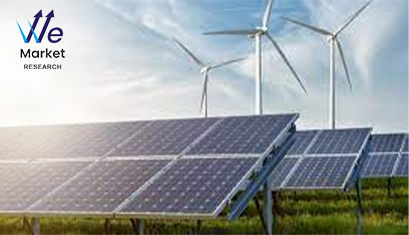Pakistan's Economy: A Fragile Revival Amidst Debt and Reforms.
Islamabad, Pakistan – Pakistan's economy is currently navigating a complex path, showing signs of a fragile revival from a recent crisis, but grappling with significant underlying challenges, including a substantial debt burden. While assistance from international partners like China and the International Monetary Fund (IMF) has provided crucial breathing space, the long-term trajectory towards sustainable growth remains contingent on the successful implementation of deep-rooted structural reforms.
Recent indicators suggest a degree of stabilization. Inflation has notably declined, reaching as low as 0.3% year-on-year in April 2025, a significant drop from the very high levels experienced previously. This has been attributed to a combination of factors including a high base effect, a relatively stable exchange rate, declining global commodity prices, and tight monetary policy.
Economic growth is projected to be modest. Various international bodies and the Pakistani government forecast GDP growth for the fiscal year 2025 to be in the range of 2.3% to 2.8%. While this indicates a recovery from the contractionary phase, it falls short of initial government targets and highlights the ongoing headwinds. Per capita income has seen a modest rise, but poverty remains a significant concern, exacerbated by previous economic shocks and high population growth.
External debt continues to be a primary concern. Pakistan faces substantial repayment obligations. In this context, China has played a significant role by rolling over loans, such as a recent $2 billion debt, providing temporary relief to Pakistan's foreign exchange reserves and fiscal space. These rollovers are crucial in helping Pakistan manage its immediate financial commitments.
Pakistan is also actively engaged with the International Monetary Fund (IMF). The country has secured an Extended Fund Facility (EFF) and a Resilience and Sustainability Facility (RSF). Discussions are ongoing for future loan tranches and the upcoming fiscal year's budget, with the IMF emphasizing the need for continued fiscal consolidation, revenue enhancement (including an improved and progressive tax system), energy sector reforms, and a market-determined exchange rate. The IMF has reportedly imposed new conditions aimed at ensuring these reforms are implemented.
The success of these structural reforms is widely seen as critical for Pakistan's economic future. Organizations like the World Bank and the Asian Development Bank have stressed that sustained and inclusive growth hinges on addressing deep-rooted structural issues, improving the business environment, and reducing inefficiencies in the public sector.
So, is Pakistan moving forward or backward? The answer is nuanced.
Signs of moving forward:
Significant reduction in inflation.
Return to positive, albeit modest, GDP growth.
Ongoing engagement and support from the IMF, contingent on reforms.
Crucial financial support and loan rollovers from bilateral partners like China.
Government commitment to fiscal consolidation and structural reforms.
Factors indicating significant challenges and potential for backward movement:
The economic recovery remains fragile and slow.
The overall debt burden is still very high, posing long-term risks.
The successful and consistent implementation of difficult structural reforms is not guaranteed and faces political and social hurdles.
Underlying structural weaknesses, such as a narrow tax base, inefficiencies in state-owned enterprises, and energy sector issues, persist.
The economy remains vulnerable to external shocks, global commodity price volatility, and domestic political instability.
Poverty and job creation continue to be major challenges.
In conclusion, Pakistan's economy is currently in a phase of stabilization and slow recovery, aided by external financing, including from China. This represents a step forward from the brink of a deeper crisis. However, the country is not yet out of the woods. The loans provide temporary relief but do not solve the fundamental economic issues.
Whether Pakistan can translate this stabilization into sustained, long-term positive momentum fundamentally depends on its ability to consistently implement comprehensive and often politically challenging structural reforms. Without these, the risk of falling back into a cycle of debt and crisis remains.
By Jo Ikeji-Uju
https://afriprime.net/pages/AnythingPakistan's Economy: A Fragile Revival Amidst Debt and Reforms.
Islamabad, Pakistan – Pakistan's economy is currently navigating a complex path, showing signs of a fragile revival from a recent crisis, but grappling with significant underlying challenges, including a substantial debt burden. While assistance from international partners like China and the International Monetary Fund (IMF) has provided crucial breathing space, the long-term trajectory towards sustainable growth remains contingent on the successful implementation of deep-rooted structural reforms.
Recent indicators suggest a degree of stabilization. Inflation has notably declined, reaching as low as 0.3% year-on-year in April 2025, a significant drop from the very high levels experienced previously. This has been attributed to a combination of factors including a high base effect, a relatively stable exchange rate, declining global commodity prices, and tight monetary policy.
Economic growth is projected to be modest. Various international bodies and the Pakistani government forecast GDP growth for the fiscal year 2025 to be in the range of 2.3% to 2.8%. While this indicates a recovery from the contractionary phase, it falls short of initial government targets and highlights the ongoing headwinds. Per capita income has seen a modest rise, but poverty remains a significant concern, exacerbated by previous economic shocks and high population growth.
External debt continues to be a primary concern. Pakistan faces substantial repayment obligations. In this context, China has played a significant role by rolling over loans, such as a recent $2 billion debt, providing temporary relief to Pakistan's foreign exchange reserves and fiscal space. These rollovers are crucial in helping Pakistan manage its immediate financial commitments.
Pakistan is also actively engaged with the International Monetary Fund (IMF). The country has secured an Extended Fund Facility (EFF) and a Resilience and Sustainability Facility (RSF). Discussions are ongoing for future loan tranches and the upcoming fiscal year's budget, with the IMF emphasizing the need for continued fiscal consolidation, revenue enhancement (including an improved and progressive tax system), energy sector reforms, and a market-determined exchange rate. The IMF has reportedly imposed new conditions aimed at ensuring these reforms are implemented.
The success of these structural reforms is widely seen as critical for Pakistan's economic future. Organizations like the World Bank and the Asian Development Bank have stressed that sustained and inclusive growth hinges on addressing deep-rooted structural issues, improving the business environment, and reducing inefficiencies in the public sector.
So, is Pakistan moving forward or backward? The answer is nuanced.
Signs of moving forward:
Significant reduction in inflation.
Return to positive, albeit modest, GDP growth.
Ongoing engagement and support from the IMF, contingent on reforms.
Crucial financial support and loan rollovers from bilateral partners like China.
Government commitment to fiscal consolidation and structural reforms.
Factors indicating significant challenges and potential for backward movement:
The economic recovery remains fragile and slow.
The overall debt burden is still very high, posing long-term risks.
The successful and consistent implementation of difficult structural reforms is not guaranteed and faces political and social hurdles.
Underlying structural weaknesses, such as a narrow tax base, inefficiencies in state-owned enterprises, and energy sector issues, persist.
The economy remains vulnerable to external shocks, global commodity price volatility, and domestic political instability.
Poverty and job creation continue to be major challenges.
In conclusion, Pakistan's economy is currently in a phase of stabilization and slow recovery, aided by external financing, including from China. This represents a step forward from the brink of a deeper crisis. However, the country is not yet out of the woods. The loans provide temporary relief but do not solve the fundamental economic issues.
Whether Pakistan can translate this stabilization into sustained, long-term positive momentum fundamentally depends on its ability to consistently implement comprehensive and often politically challenging structural reforms. Without these, the risk of falling back into a cycle of debt and crisis remains.
By Jo Ikeji-Uju
https://afriprime.net/pages/Anything








